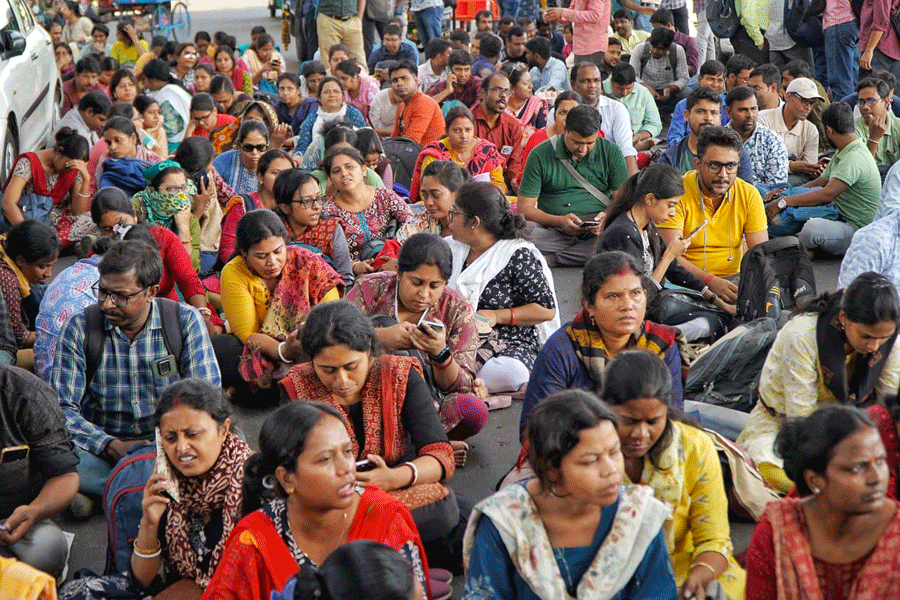Santosh Mondol used to fish crabs with his wife, Asha, in the core area of the Sundarbans. One day, their boat was attacked by a Royal Bengal tiger that killed Santosh. Within a month or so, Asha returned to her old profession that had snuffed out the life of her husband. In a matter of six months, Asha became a victim of the tiger herself.
In Dayapur island in the Sundarbans, every third house has at least one family member who has been killed by a tiger. The stories seldom differ from that of Santosh and Asha - most, if not all, of the tiger victims are killed when they are out crab fishing illegally in the core area.
Crab fishing is not a profession chosen on account of the scarcity of alternative livelihoods. The Joint Forest Management Committee has set up self-help groups to encourage poultry farming to wean people off fishing and honey gathering in the forests. A kilogramme of crab can yield up to Rs 400, while after toiling for 8-10 hours, a daily wage labourer or an agricultural worker earns Rs 250-300. The opportunity to earn money with minimal physical effort makes crab fishing irresistible.
'Tiger widows' face financial duress in the aftermath. Crab fishing in the core area is an illegal activity. Hence the families are not entitled to compensation from the forest department. Families with private life insurance have little respite too: insurance agents demand a hefty portion of the claim money as bribe to expedite paperwork and payout. Politics is rampant too, influencing the process and amount of compensation as well as the choice of recipients. Furthermore, the high salinity of water in Dayapur poses two problems for agricultural workers: rice sowing and harvesting are seasonal activities, forcing them to seek odd jobs at other times of the year. Also, the standing crop is extremely susceptible to natural calamities.
Bitter, not sweet
Honey collectors also face attacks from tigers. But they are less vulnerable because of the seasonal nature of their occupation. The forest department distributes a small number of permits to individual honey collectors that have to be renewed each year. The number of permits is determined by the amount of honey the forest department would like to obtain. Honey collectors require private life insurance, and their families receive an additional two lakh rupees as compensation from the forest department in the event of a tiger attack or any other adversity. Although tiger attacks have soared in the recent past, there is a fundamental difference in the circumstances: tigers no longer intrude into villages; instead, it is the fishermen who are walking into the tiger's lair.
Apart from the threat from tigers, Dayapur battles a number of other problems. The island was among the hardest hit by the cyclone, Aila, in 2009. Recovery has been a slow and tedious process. The education system is in a crisis. Formerly, school principals and teachers stayed on the island and were invested in the children's education. These days, vacancies among teachers and principals are common and the absenteeism rates quite high.
Another pressing concern in the Sundarbans is transportation. Ferry boats only venture out during high tide as they get stuck otherwise. The closest hospital from Dayapur is in Gosaba, around an hour's journey by boat. Tides become a factor while commuting as does the season of the year. During monsoons, boatmen offer their services if they have a certain number of passengers to recover the cost of fuel. The cost of reserving a boat is prohibitive for the common man.
The Sundarbans receive international spotlight as a Unesco heritage site and as the abode of the Royal Bengal tiger. Unfortunately, its human inhabitants remain caught in a suffocating web of climate change, poverty and government apathy.











